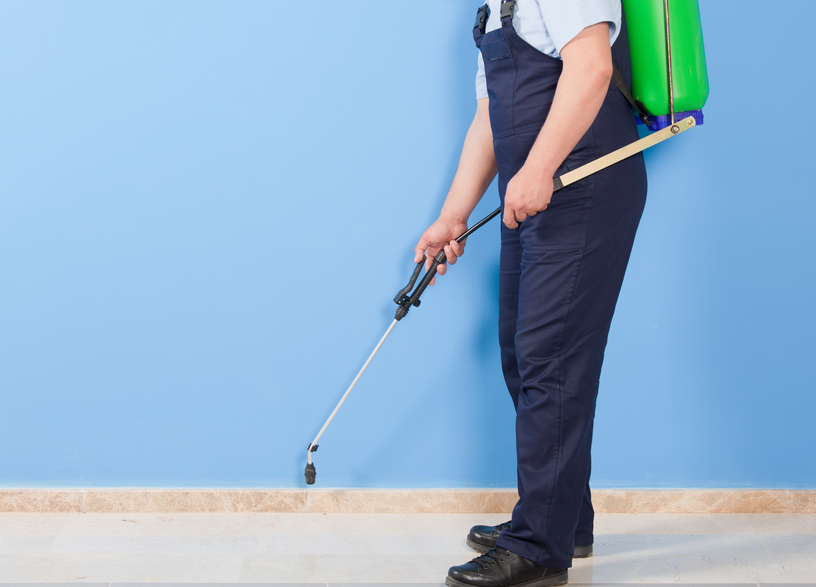The practice of integrated pest management (IPM) helps to minimize the use of chemical pesticides by controlling pests to the extent possible using nonchemical means. But it is not always possible to completely control pests without chemicals.
 |
So, if you’ve done all you can short of chemical pesticides, here’s how to use those chemicals in an environmentally responsible way that will have a minimal impact on the health of workers, customers, and clients.
Come Out of the Fog
The worst way to deal with pests, from an environmental and worker health standpoint, is the scorched-earth “bug bomb,” or fogger. The residue from these, and to a lesser extent, from sprayed pesticides, can get on workers’ skin, linger in the air they breathe, and contaminate their food, drinks, and candy dishes. Even worse, foggers aren’t necessarily effective at what they’re supposed to do, which is to kill bugs tucked away in inaccessible places and provide long-term pest control.
Instead, try these less-hazardous methods of putting the pests and the pesticides together:
- Stop “routine” spraying. Your pest control company should be monitoring the presence of pests and should apply pesticides only when pests are actually present. This minimizes not only the application of pesticides but also the possibility that pests will become resistant to the method of pest control that is used.
- Use baits. Gel baits and bait stations can be placed in dark corners and areas that pests are likely to frequent. Some of these products are designed to be carried back to nesting areas by pests, where they are consumed by—and kill—the entire nest.
- Use targeted products. Products are available that target only insects, for example, insect growth regulators. These are generally safer products than more wide-spectrum pesticides.
- Tell workers. Workers should know when pesticide applications will occur. They should remove food, drinks, lip balm, and similar items from their work areas, as well as personal items that have regular contact with their skin, like sweaters or shoes.
- Observe all safety precautions. Follow the manufacturer’s directions for ventilation and for waiting times before reentry is allowed. Don’t just let the pesticide sit in an unventilated or minimally-ventilated space for the prescribed amount of time; open windows and use fans or other active ventilation systems to “air out” the workplace before employees return.
- Be aware of possible problems. If you return to the workplace and there’s a strong odor or workers complain of symptoms consistent with pesticide exposure, clear the building, provide any medical assistance workers require, and take additional precautions to ensure that the workplace is safe before letting anyone back in.
Need more information on hazardous chemicals or indoor air quality? You’ll breathe easier with the resources available at Safety.BLR.com®.
